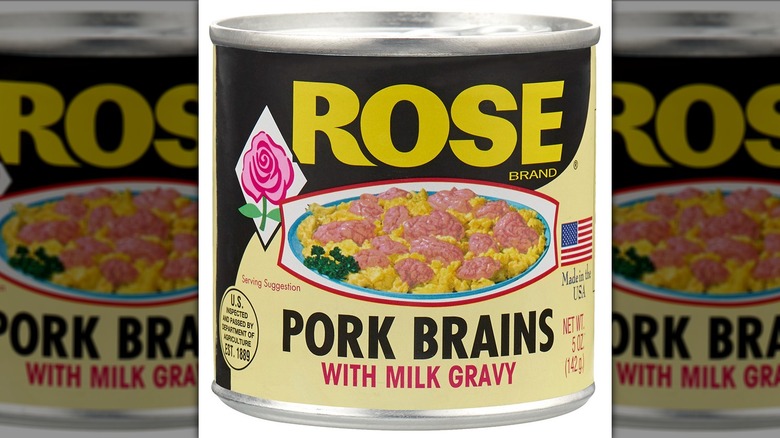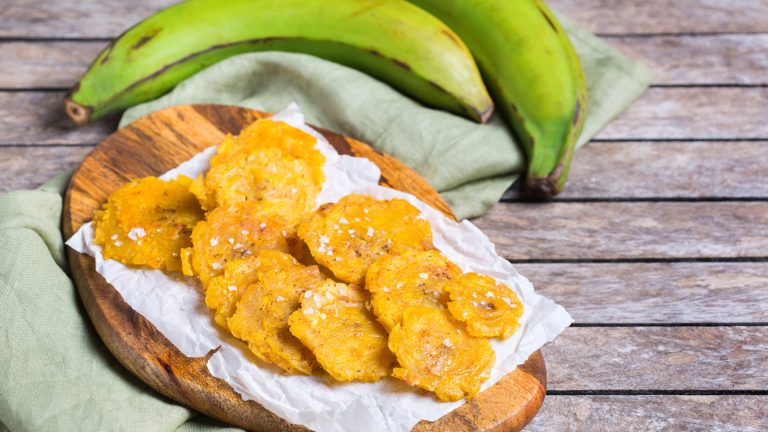We may receive a commission on purchases made from links.
Since it received its very first patent in 1810, the humble can has preserved some unusual foods within its aluminum bowels. Even today, you can find canned cheeseburgers and brown bread, smoked rattlesnake and alligator filet, haggis and pigeon, among many other tinned delicacies. And if you scour enough grocery store shelves, you might also find a can of brains.
No, this isn’t a meal intended for on-the-go zombies or child-psyche-scarring Indiana Jones villains who only have time for store-bought sacrifices. Animal brains have actually appeared on tables throughout history and across many cultures. The Romans served calf brain stuffing and pig brain souffle at feasts, and raw monkey brains were on the menu for banquets in Imperial China. The 4th-century cookbook, “Apicius,” recorded recipes for rose-flavored brain pudding and brain sausage, and cookbooks throughout the centuries have followed suit with their own mind-full meals.
In the United States, though, animal brains have sharply declined in popularity since the 1950s. These days, there’s only one company left in the country that still makes canned brains. Rose has been serving its canned pork brain in milk gravy (a common practice for liver, too) for several generations, and it outlasted Kelly’s and Armour to dominate the cerebral consumption market. Occasionally, you’ll find fresh brain on fine dining menus, but the meat is surprisingly rare in the U.S. for a commodity that was once so ingrained in the global culinary consciousness. Its domestic decline wasn’t without reason, though — a few scientific discoveries contributed to the fall.
Health concerns lead to a culinary brain drain
Throughout history, the eating of animal brains has been economical, nutritional, and palatable. Everyone followed a nose-to-tail approach to meat consumption, and for reasons of cost, need, and sometimes wartime rationing, no organ went to waste, and many types of meat were canned for preservation. The brain certainly fell under that food philosophy, but it also transcended it. It is a relatively scarce cut, since you only get one per animal, and its mild, rich flavor and creamy texture contributed to this luxurious reputation — some cultures even believed that eating brains would give you intelligence. The brain is full of omega-3 fatty acids and vitamins, which added to its value, but its overall nutritional content is what helped ensure its eventual dining demise.
In the early 20th century, a connection between lipoproteins (which carry cholesterol throughout the body) and the heart condition atherosclerosis was first established — and by the early 1950s, the studies had linked cholesterol-heavy diets with cardiovascular disease. Well, it turns out that a single serving of canned pork brains contains more than 1,000% of your recommended daily cholesterol intake. And if that mid-century discovery wasn’t enough to curb brain consumption, the final death knell rang a few decades later when eating mad cow disease-infected beef was connected to contracting Creutzfeldt–Jakob Disease. Although the disease is rare and one can of pork brains alone won’t cause a heart attack, it gave U.S. consumers in the 20th century a little too much food for thought (instead of thought for food). Brains began to disappear from cookbooks and menus.
The dish is still a global delicacy
Brains hardly disappeared entirely, though, even in the United States. In parts of the Southern U.S., you’ll still occasionally find the once-popular brain and eggs dish on breakfast tables and in restaurants; the lone canned brain producer, Rose Pork Brains, makes its home in the South, too, and does its cerebral canning in Sandford, North Carolina. In the Ohio River Valley, fried brain sandwiches are still beloved, and tacos de sesos, which are typically made from cow or goat brains, have their place for Californian and Texan palates.
Although the meat is fairly rare in the U.S., many countries around the world still eat brains. Tacos de sesos, for example, originated in Mexico, and China often includes pig brains in Sichuan hotpot. Italy has frittelle di cervello, brains fried in batter, and France has cervelle de porc, pig brain that’s boiled or steamed and mixed with herbs. Northern Thailand traditionally wraps their pig brain in banana leaves and grills it in a dish called aeb, and in parts of South Asia, you’ll find maghaz, which is stir-fried mutton brain. Brains in a tin may have primarily joined the canned foods of the past and the U.S. may have mostly abandoned brains as an everyday dish, but plenty of culinary cultures still have a mind of their own.







